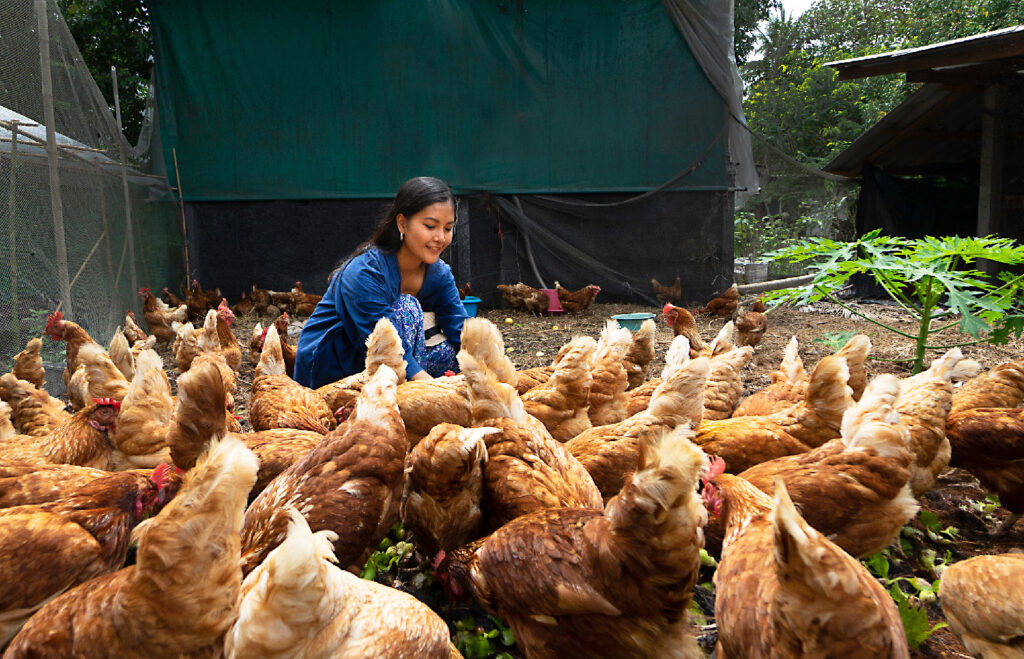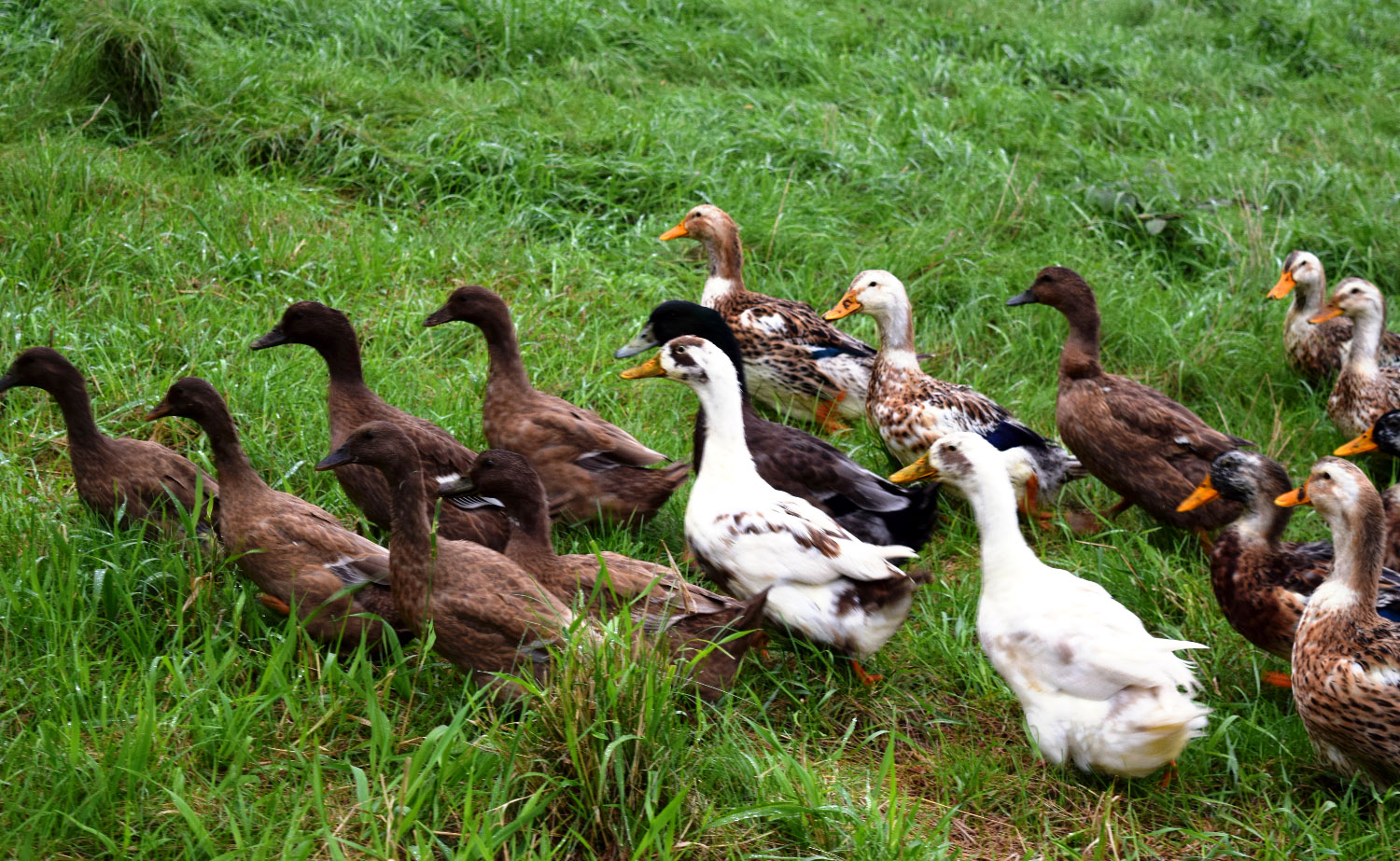7 Prevention – proactive, practical measures that prioritize animal health
Prevention is the cornerstone of organic and alternative animal health
 Without antibiotics to treat diseases or conventional anti-parasiticides to treat parasite infections, prevention is a top priority for organic and alternative (O/A) farmers (Note, not all alternative systems prohibit antibiotics). Lack of ability to use antibiotics potentially increases the risk of disease spread if disease enters a herd through a sick animal or on a fomite, like the shoes of a visitor. Conversely, the unique circumstances on organic farms can modify infectious disease transmission risks in their herds. These unique circumstances, which may decrease infectious disease risk (at least in dairy herds (Pieper et al., 2014)) include the increased likelihood of farms being smaller, keeping a closed herd, and having decreased human traffic of professionals with regular animal/farm contact such as veterinarians, nutritionists, feed delivery, etc. Regardless of circumstance, due to the treatment option restrictions that come with farming in an organic or alternative manner, greater emphasis must be placed on disease prevention (Sorge et al., 2016; Sorge et al., 2019). For example, organic regulations heavily emphasize the importance of sanitation practices for disease prevention (Coffey & Baier, 2012).
Without antibiotics to treat diseases or conventional anti-parasiticides to treat parasite infections, prevention is a top priority for organic and alternative (O/A) farmers (Note, not all alternative systems prohibit antibiotics). Lack of ability to use antibiotics potentially increases the risk of disease spread if disease enters a herd through a sick animal or on a fomite, like the shoes of a visitor. Conversely, the unique circumstances on organic farms can modify infectious disease transmission risks in their herds. These unique circumstances, which may decrease infectious disease risk (at least in dairy herds (Pieper et al., 2014)) include the increased likelihood of farms being smaller, keeping a closed herd, and having decreased human traffic of professionals with regular animal/farm contact such as veterinarians, nutritionists, feed delivery, etc. Regardless of circumstance, due to the treatment option restrictions that come with farming in an organic or alternative manner, greater emphasis must be placed on disease prevention (Sorge et al., 2016; Sorge et al., 2019). For example, organic regulations heavily emphasize the importance of sanitation practices for disease prevention (Coffey & Baier, 2012).
Focus on animal health
The Guide for Organic Livestock Production stresses several elements, conditions, and practices that support health and disease prevention practices on organic livestock farms, including:
Genetics – This includes the cultural practice of choosing livestock breeds specifically adapted to a region, climate, and its forages. It also includes choosing animals that are genetically resistant to specific parasites. These practices reflect good husbandry and improve animal health, welfare, and production. Paying attention to your animals and only breeding from the best will result in a better herd (Coffey & Baier, 2012).
Nutrition – USDA certified organic livestock must be fed a 100% organic diet and have a grazing requirement to fulfill this rule. Swine, who cannot get a complete diet simply by grazing, must be supplemented by feeding organic grain or organic protein sources such as soybean meal, camelina, or rapeseed. When it’s not the grazing season, livestock can access outdoors in yards, feeding pads, and feed. The area should be large enough to prevent crowding and competition among the animals for the feed provided (Coffey & Baier, 2012).
Low-stress environment – Low stress supports good health and welfare. Reduced stress in the form of appropriate shelter, humane animal handling, and movement, controlling predation, and avoiding overcrowding support good health and welfare (Coffey & Baier, 2012).
Exercise – The ability to be outdoors, free to express normal behaviors, and exercise leads to better health. Exercise improves muscle tone, relieves stress, and boosts the immune system. This can result in improved health outcomes and smoother deliveries for pregnant animals (Coffey & Baier, 2012).
Minimize exposure to disease and parasites – Disease prevention practices, particularly biosecurity, are essential components for maintaining and promoting animal health on any farm, but especially on O/A farms. Having areas to isolate or quarantine animals, maintaining a closed herd, good cleaning and disinfection protocols, limiting visitor contact with their animals, and good grazing management help prevent disease introduction and spread in the herd (Coffey & Baier, 2012).
Vaccination and other preventive measures – Vaccines are allowed and encouraged under the National Organic Program (NOP) guidelines. This is a pivotal prevention area, and veterinarians should be closely involved in designing a vaccine program tailored to the specific operation and its disease risk. Many certifiers request that vaccination recommendations be made by veterinarians in the local geographical area. Veterinarians should know that not all O/A farmers (nor conventional producers) are keen on the routine use of vaccines. This provides a great opportunity for discussion and clear communication between veterinarians and producers to learn, understand and be sensitive to each other’s views (Coffey & Baier, 2012; Marbleseed Guide for Organic Livestock Production 7th Edition). In general, O/A livestock farmers often prefer to limit vaccination to disease agents that present clear threats to animal health and provide a greater cost-benefit ratio. Examples include vaccines for respiratory viruses and Clostridial vaccines in cattle.
A national study was conducted by The Livestock Project in 2021 with O/A producers to determine what they knew and practiced in the way of biosecurity and disease prevention on their farms. The study did not show surprising results; similar results would likely be found when surveying conventional livestock farms. That is, biosecurity is rarely at the top of anyone’s list, and some practices are embraced, and others are put on the back burner. What surfaced from this study was that O/A producers might benefit from materials focused on their specific type of operation(s). These suggested materials are being developed by The Livestock Project to address biosecurity/disease prevention on O/A farms. While not vastly different from what others have prepared for conventional small farms, these materials are sensitive to the differences between conventional and O/A producer needs, goals, and philosophies and are targeted directly to some of the unique concerns of O/A producers. They will include information on everyday biosecurity aimed at O/A farmers, disease outbreaks, reportable and foreign animal diseases (FAD), guiding organic and alternative producers during a emergency, and the role of veterinarians on O/A farms as advisors on these disease prevention topics. The Livestock Project website can be accessed here: The Livestock Project.
Organic and/or Alternative
United States Department of Agriculture
Foreign Animal Disease


